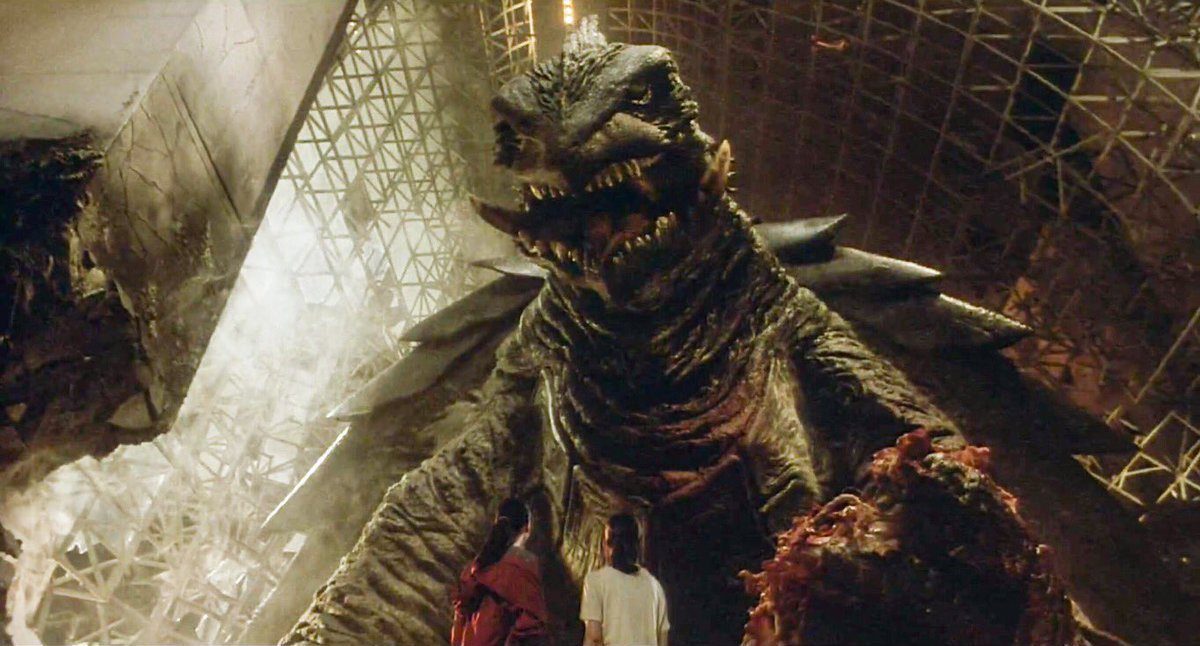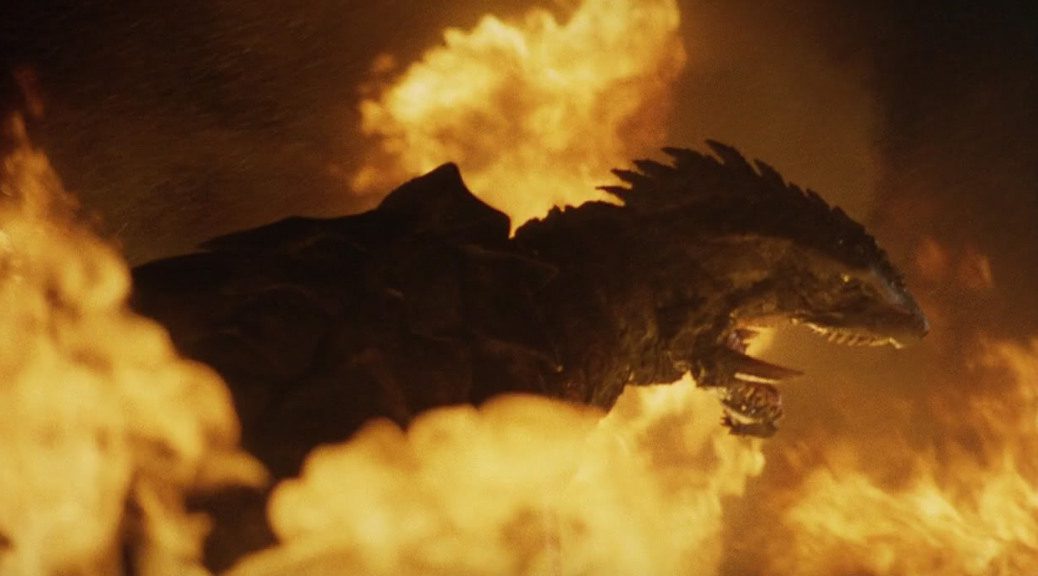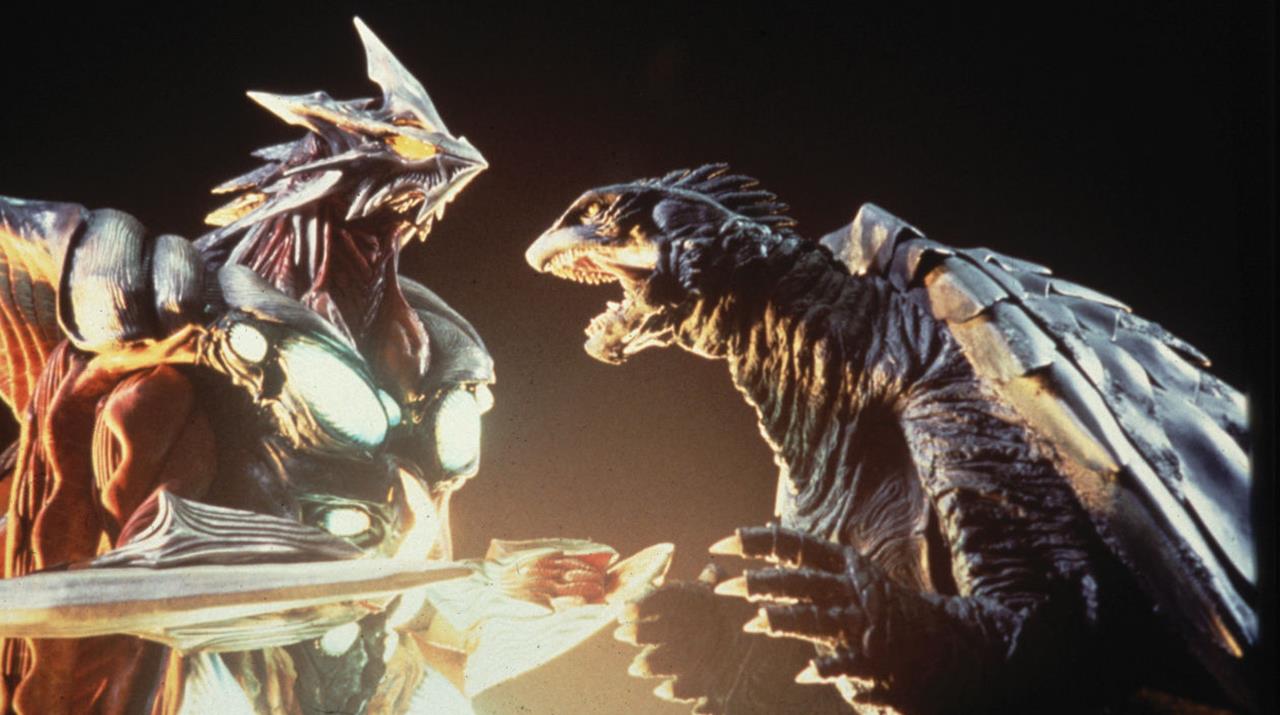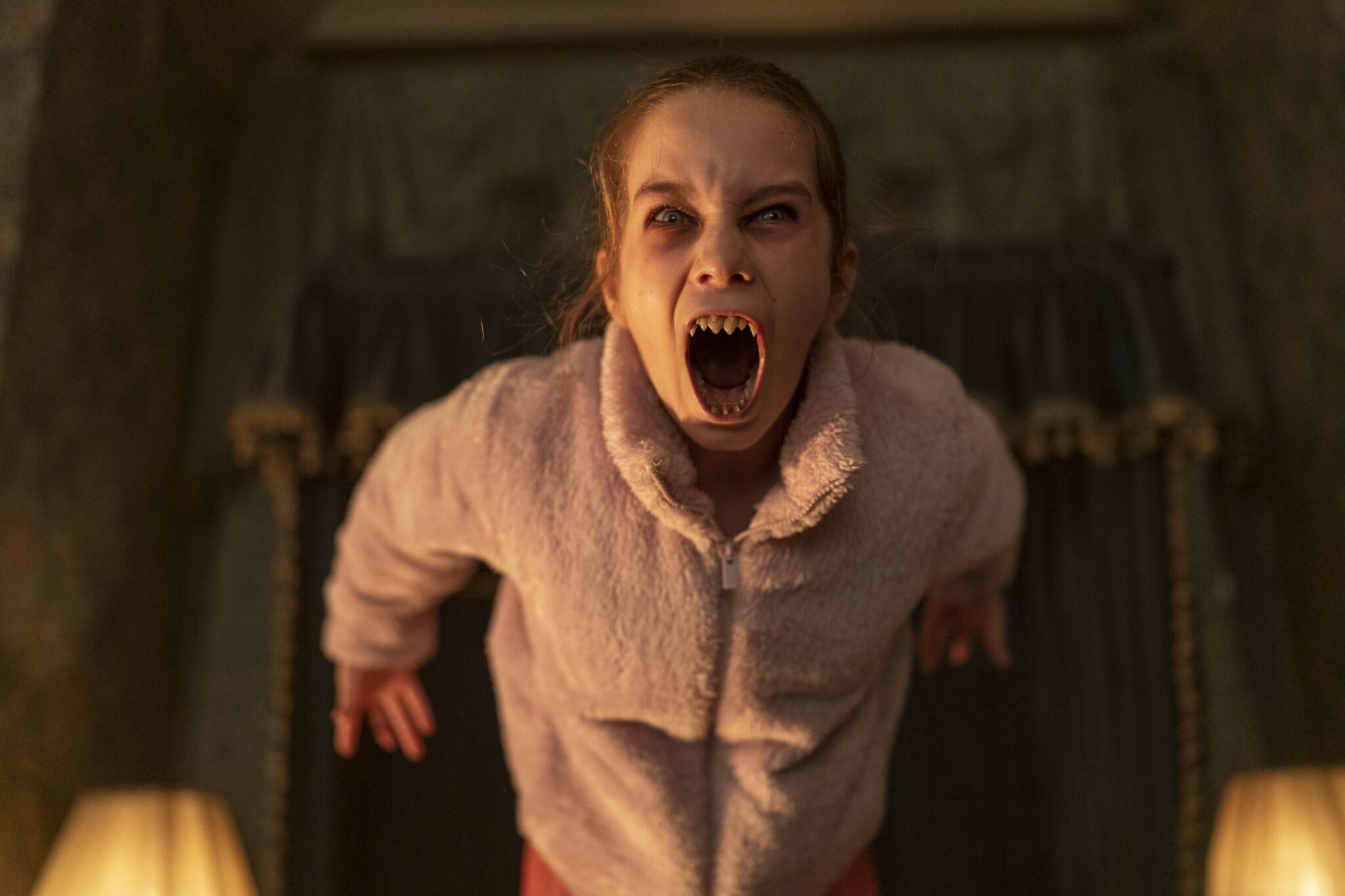
In 1995, while Gamera battled the Gyaos, he pushed his way through an apartment building, killing the parents and cat of Ayana Hirasaka (Ai Maeda) while she looked on from the car.??In the years since, Ayana?s hatred for Gamera has festered.
Ayana now lives in Minami-Asuka, Nara, with her aunt, uncle, cousin, and brother Satoru (Takahiro Ito). Satoru is being bullied, so Ayana agrees to break into a shrine on a dare from the bullies on the condition that they leave him alone. In the shrine, Ayana discovers a giant egg and magatama.
Meanwhile, Gyaos have begun appearing all over the world. Gamera, his connection to humanity severed when the magatama shattered during the events of Gamera 2: Attack of Legion (1996), has been frantically racing around the planet, trying to swat the Gyaos down before they can reproduce out of control. Eventually he catches up to some Gyaos over Shibuya, Tokyo, during a busy Friday evening, and the ensuing battle leads to billions in property damage and thousands dead.

The egg Ayana found hatches, and inside is a tentacled monster. Ayana is linked to the monster through the magatama she found, and learns that it hates Gamera like she does. She names the monster Iris, after her cat that was killed by Gamera. Iris grows, but like Ayana?s hatred, the monster begins to take control of her, and soon Iris is on a mission to kill Gamera, threatening the whole world.
Gamera 3: Revenge of Iris is my favourite film. It is easily among the best of the Japanese giant monster genre, and is an incredible special effects achievement for its time. The human and monster drama is woven together tightly, and unlike most other giant monster films where the humans get out of the way for the final monster battle, our main characters are right next to the dueling monsters, and their actions can impact the fight.
Our lead this time is actress Ai Maeda who, despite her young age, turns in a very believable performance of a teen who has grown extremely bitter at the cause of her parents? deaths. Having once lived in Tokyo, she now lives in the small village of Minami-Asuka with her aunt, uncle, and cousin who are pressuring her to change her last name to theirs, something she doesn?t want to do because its one of her last connections to her parents.

Newcomer to the series Senri Yamazaki plays goverment fortune teller Mito Asakura, and believes she is the rightful human priestess for Iris. Using her position in the government, she eventually has Ayana kidnapped and taken to a shrine, where she seemingly tries to get some control over Iris.
Another newcomer to the series is Toru Tezuka, who plays the eccentric programmer and government agent Shinya Kurata. Kurata is an associate of Asakura, with detailed theories about the relationship between Gamera, Gyaos, Iris, and humanity. Tezuka is a prolific actor, often playing odd characters, and has worked multiple times with directors Hideaki Anno and Sion Sono.
Shinobu Nakayama returns to the Gamera series, reprising her role as ornithologist Dr. Mayumi Nagamine from Gamera: Guardian of the Universe (1995). She reunites with Tsutomu Osako, played once again by Yukijiro Hotaro, who is now living homeless on the streets of Tokyo due to the trauma from his past encounters with monsters.
Also returning is Ayako Fujitani in the role of Asagi Kusanagi. In the previous film, however, the magatama that linked her to Gamera was shattered, severing her connection to the monster. Still, she trusts Gamera to do what?s right, even when his actions cause others to doubt him.

Gamera undergoes another redesign, this time looking much meaner than in the previous two films. His head is smaller, and gone are the large cute eyes. His shell is also much more jagged than before, and the crest on his head is enlarged. This is easily the best design the monster has ever had, but it is a far departure from the Showa?s Gamera series? friend of children look.
Iris is a very alien looking monster, with no clear eyes or mouth. It has long tentacles flowing from its back, and its arms end in large pointed spear-like tips. Iris emits a whale-like song rather than a traditional monster roar, and it is bioluminescent, which looks gorgeous during the night scenes in Kyoto. When just a hatchling, Iris almost looks like a Pokemon, and despite its seemingly harmless appearance, it quickly reveals how dangerous it can be when it pierces a can of cat food with a tentacle and sucks the contents out of it.
Gamera 3: Revenge of Iris is a special effects showcase and there are several jaw-dropping sequences in this film. Gamera?s battle with Gyaos in Shibuya is an early highlight, in which Gamera shoots fireballs around the ward trying to blast the fast-flying Gyaos out of the air. The fireballs slam into the ground and landmarks in rapid succession, sending debris and human carnage flying. Another highlight is when Gamera and Iris crash through Kyoto Station, our core cast in the foreground as the monsters push through the wall. Iris then tosses an injured Gamera out the otherside of the station, which is built largely of glass, causing the monster and debris to rain down on the bus terminal outside. Gamera 3: Revenge of Iris also uses more CGI special effects than any other Japanese giant monster film up to that point. Fortunately the CGI is greatly improved over the little bit used in Gamera: Guardian of the Universe and Gamera 2: Attack of Legion, and while it looks a bit dated now, it still does the job well.
Gamera 3: Revenge of Iris is currently available on Blu-ray from Arrow Video in the box-set titled Gamera: The Heisei Era. It contains the Japanese version and the American English dub.




Overated movie.